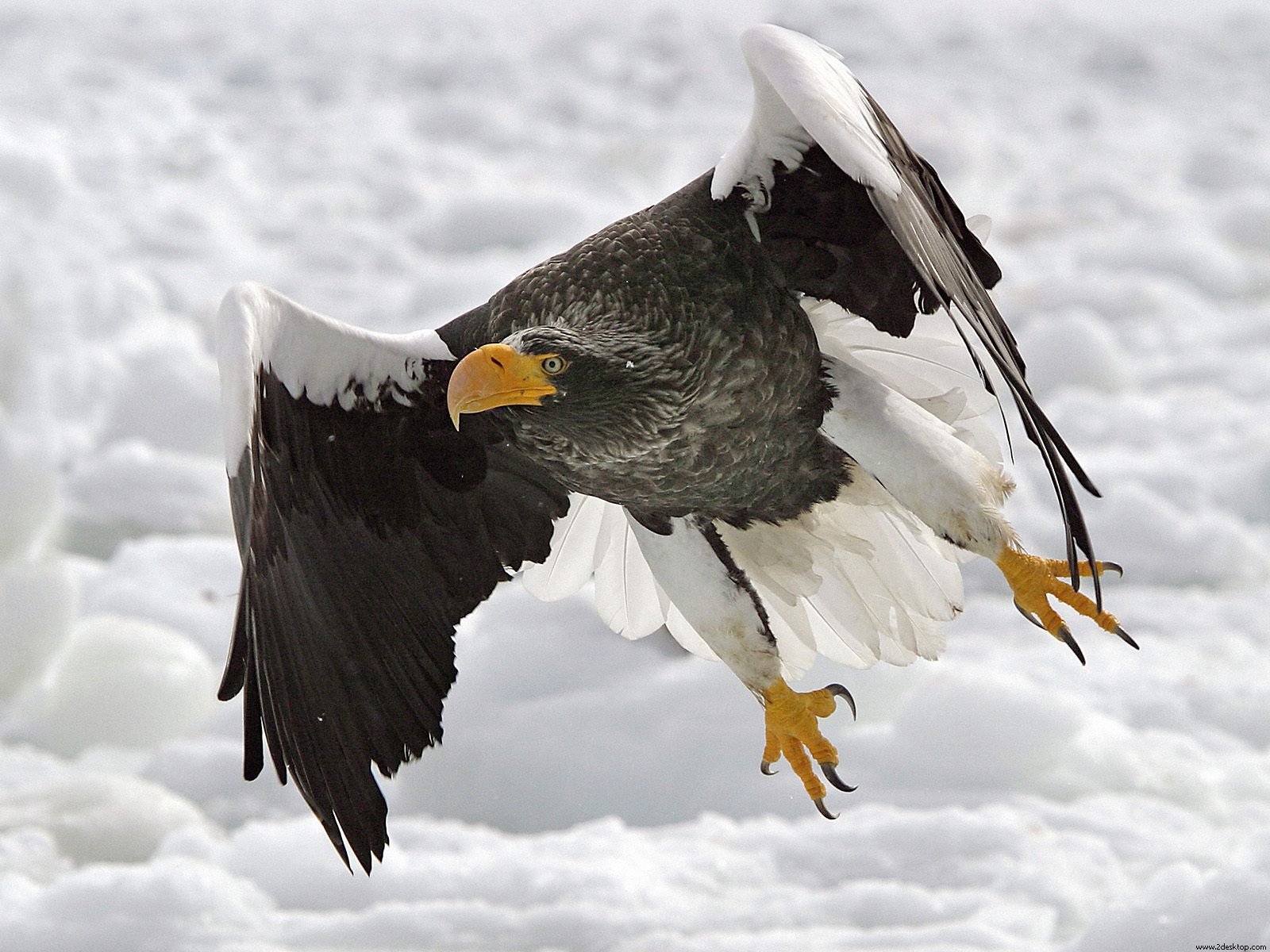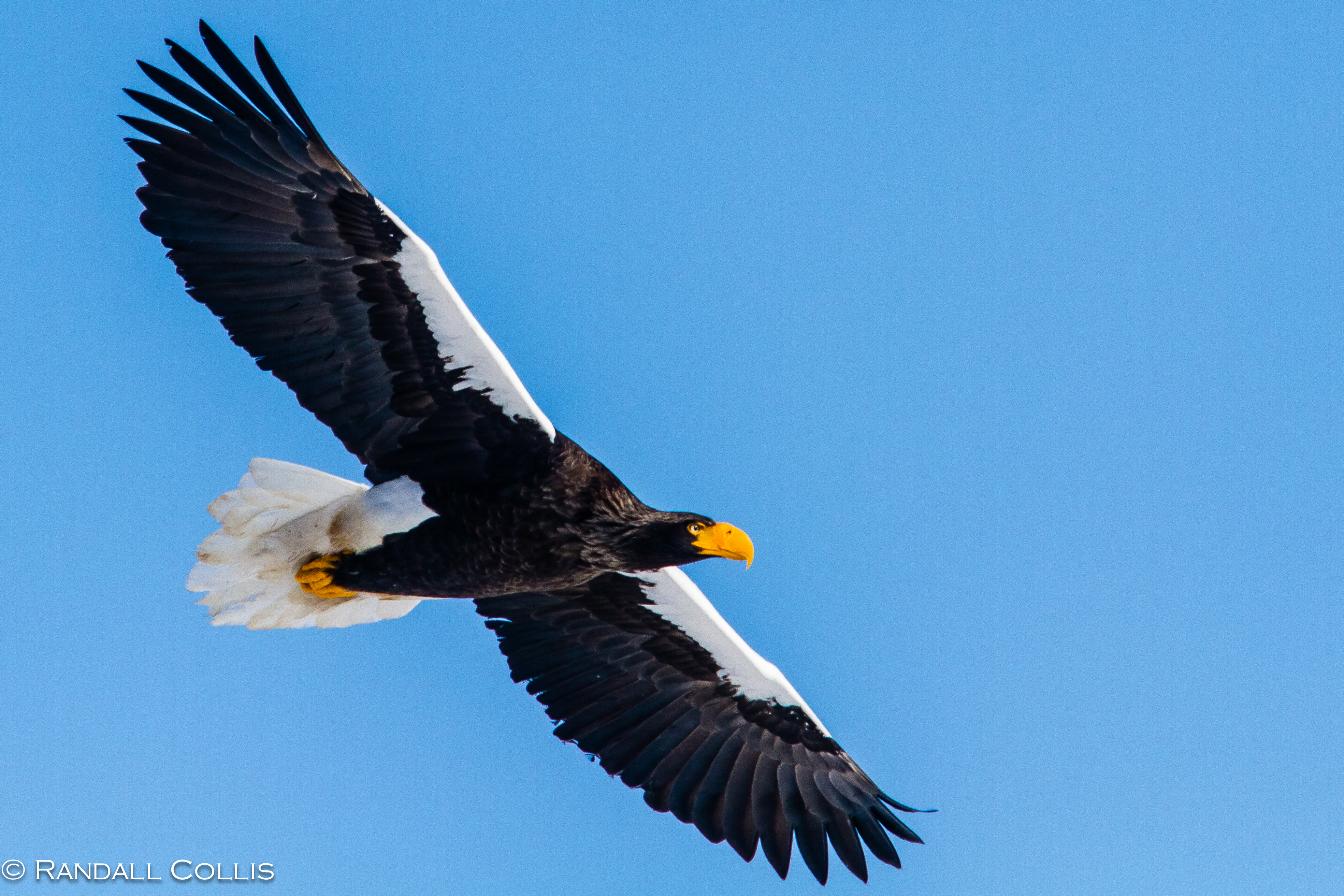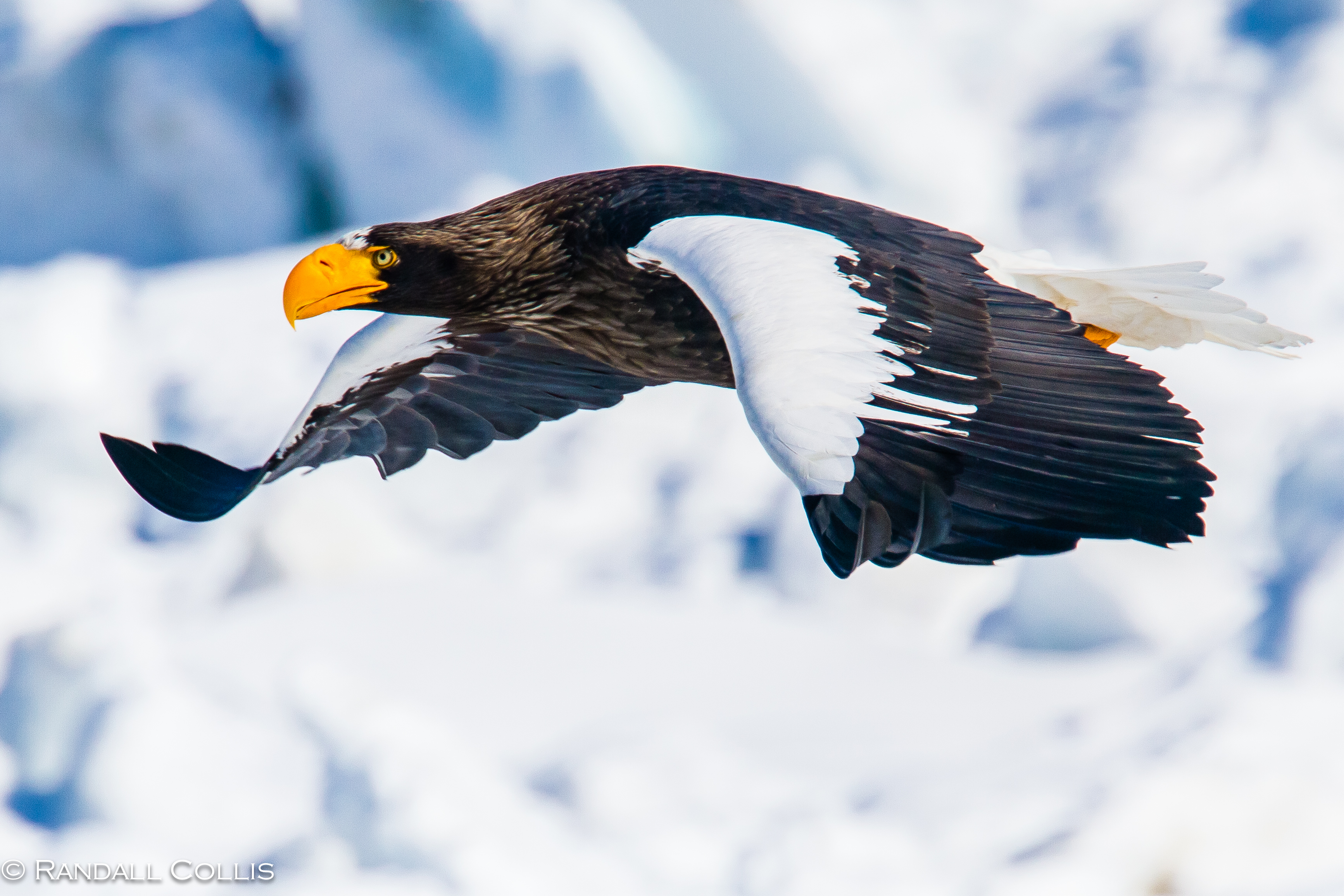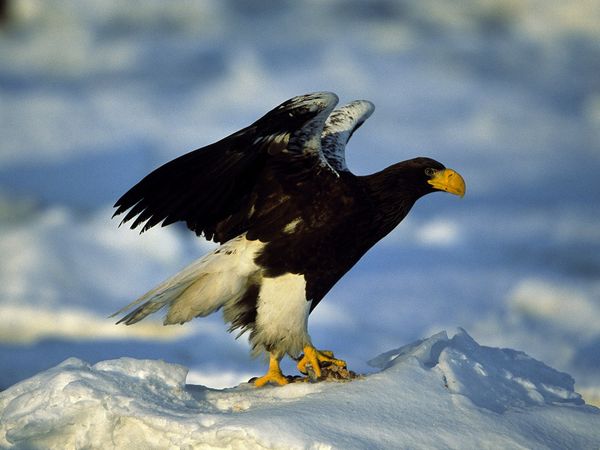
Haliaeetus pelagicus
SUBFAMILY
Accipitrinae
TAXONOMY
Aquila pelagicus Pallas, 1811, islands in the sea of Okhotsk.
OTHER COMMON NAMES
English: White-shouldered sea-eagle; French: Pygargue empereur;
German: Riesenseeadler; Spanish: Pigargo Gigante.
PHYSICAL CHARACTERISTICS
33.5–94 in (85–94 cm); 10.8–19.8 lb (4.9–9 kg); female larger
and heavier than male. Blackish brown all over, except white
tail and shoulders. Morph “niger,” found in Korea, is all black.
DISTRIBUTION
Coastal west Bering Sea and Sea of Okhotsok, wintering further
south as far as Korea. Breeds mainly Kamchatka Peninsula,
Sea of Okhotsk the lower reaches of the Amur River, and
on northern Sakhalin and Shatar, Russia.
HABITAT
Coast and lower reaches of rivers, less often inland along rivers
and lakes where fish are abundant. Most often in forested river
valleys which provide trees for nesting.
BEHAVIOR
Shift in population southward for the winter. Some stay at
Kamchatka and on the Okhotsk coast; most winter in Japan,
reaching north-east China, North and South Korea.
FEEDING ECOLOGY AND DIET
Mostly large fish, alive or dead, especially Pacific salmon, but
will catch a variety of other prey and scavenge.
REPRODUCTIVE BIOLOGY
Monogamous. Mostly nests in large trees, but also sea cliffs
and cliffs far inland near lakes and larger rivers. Lays in
April–May in a large stick nest. Clutch size usually two; incubation
about seven weeks, fledging about 10 weeks.
CONSERVATION STATUS
Vulnerable. Total world population is estimated at 5,000 birds
and declining. Main threats are felling of old forest and building
of hydroelectric plants, over-fishing and lead-poisoning
from shot in deer carcasses left by hunters. Recommendations
for alleviation of threats include minimizing the impact of industrial
development in Russia, establishing artificial feeding
sites, encouraging sustainable management of fishing stocks
and protection of salmon spawning grounds.
SIGNIFICANCE TO HUMANS
None known.
Other popular Animals
Photo Gallery of - Steller’s sea-eagle




 Animalia Life
Animalia Life